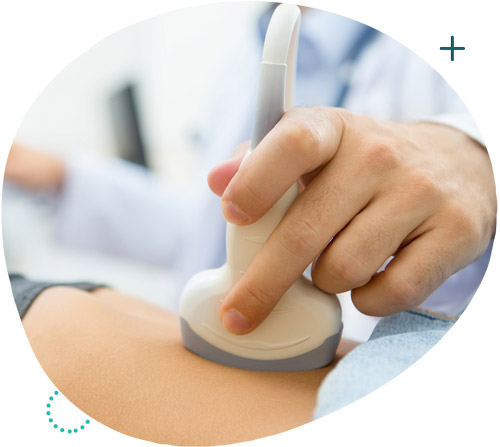This website uses cookies so that we can provide you with the best user experience possible. Cookie information is stored in your browser and performs functions such as recognising you when you return to our website and helping our team to understand which sections of the website you find most interesting and useful.
Surgery
Surgery
Laparoscopy-Pelvic floor prolapse
We are talking about pelvic floor prolapse in women when the uterus, bladder, rectum (part of the large intestine), or all together project into the vagina (hysterocele, cystocele, rectocele respectively).
Depending on the degree of prolapse, the projection may be limited to the interior of the vagina (1st degree), reach the vulva (2nd degree), or project externally outside the vulva (3rd degree).
It is a benign common pathology, which although it can be impressive and possibly scare the woman, does not have any serious impact on her health.
It occurs mainly in older multiparous women with a history of total hysterectomy and is due to “relaxation” of the pelvic tissues.
It is estimated that 1 in 9 women, during her lifetime, will undergo a total hysterectomy and of these 10% will present symptomatic pelvic floor prolapse.
The fact that a woman has prolapse does not necessarily mean that she also has symptoms. She may not even be aware of it and be diagnosed by chance during a routine examination at her gynecologist, or due to recurrent UTIs. If it is more prolapsed, then the woman may feel a feeling of fullness low in the vagina, or see something like an “egg” projecting out of the vagina, often at the end of the day.
The treatment depends on the woman’s discomfort, how much it affects her quality of life, the degree of prolapse and her age.
There is no pharmaceutical treatment since the problem is purely mechanical, so we are oriented towards a conservative solution, such as the placement of vaginal rings.
Vaginal pessaries are rings usually made of silicone, which are placed in the office intravaginally by the gynecologist (no kind of anesthesia is required). In this way, the externalized organs are held in place temporarily.
A more radical and permanent solution is, of course, the surgical restoration of the prolapse.
The technique of colporrhaphy (anterior, posterior) is the classic technique for restoring the prolapse of the female pelvic organs. But since the pathology of prolapse is due to tissue relaxation, the results of this technique depend significantly on the quality of the patient’s tissues. The looser the tissues, the higher rates of prolapse recurrence occur postoperatively. It is estimated that up to 50% of women who undergo surgery with this technique will experience a recurrence of the prolapse in the following years.
Nevertheless, it is widely applied worldwide, mainly in older women.
Another much more specialized and newer technique is pelvic floor suspension with polypropylene synthetic mesh. In this way we restore the anatomy by reinforcing the loose pelvic walls with the mesh, thereby improving post-operative recurrence rates.
At the beginning this technique was applied with an open surgery, but now with the development of technology it is almost exclusively performed laparoscopically, by specialized gynecologists, with faster recovery times and better aesthetic results.
It is estimated from studies that the anatomical recovery rate for more than two years after surgery is 90-100%, the satisfaction rate of women is 70-100% while the recurrence rate ranges from 0-12%.
The two most common procedures of this kind are sacrocolpopexy και η pectopexy. These are variations of the same technique where the point of support of the mesh is just different.
It is currently considered the technique of choice for young women with symptomatic pelvic organ prolapse.
In any case, the woman whose daily life is affected by organ prolapse should consult her gynecologist, as there are solutions that can significantly improve her quality of life.









